Discover the epitome of luxury and comfort with the best silk duvet covers. Crafted from premium silk fabric, our duvet…
Our top 10 favourite duvets in the UK
Best Overall: Panda Cloud Duvet

The Panda Cloud Duvet is an all-seasons duvet that focuses on keeping you cool and comfortable year-round! After all, not only does it have a 10.5 TOG rating but it also utilises a 100% bamboo cover for added breathability. That's why we have given it an award for the Best Duvet 2024.
And the filling is equally as admirable, with a 50/50 split between bamboo and microfibre. This means that the duvet is rather bouncy and light while still offering decent warmth. That being said, it likely won't quite cut it during winter months.
The duvet is also hypoallergenic, anti-bacterial and moisture-wicking. This basically just means that if you tend to overheat or have allergies, you won't have to worry about being abruptly woken up in the middle of the night.
Combine all of these features with a sleep trial, a 5-year warranty, and free delivery, and you get a duvet that's hard to pass up on!
To learn more, read our full review of the Panda Cloud Duvet.
- Cover: Bamboo rayon
- Filling: Bamboo and Nano-microfibre
- TOG: 10.5
- Size: Single, Double, King, Super King
Advantages



Disadvantages


Best Eco-Friendly: Aeyla Air Duvet
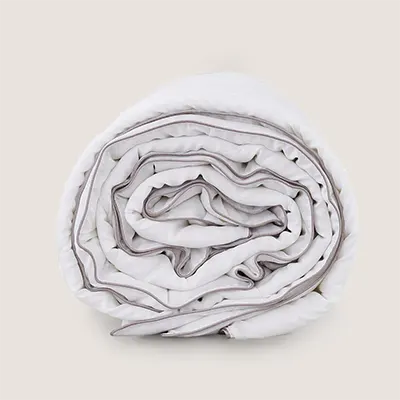
It’s their Air Duvet which comes in a lightweight (4.5 tog) option or an all-season (10.5 tog) one. Even the higher tog is a light duvet compared to other alternatives, but the tog filling is what keeps you snug in the colder months.
This duvet is made from eucalyptus making it eco-friendly while being super gentle on your hair and skin. So, if you’re using it without a duvet cover it won’t cause breakouts or split ends. It’s also very breathable and hypoallergenic which is perfect for those who sleep hot or suffer from allergies. There’ll be no more uncomfortable nights sleep with this duvet.
All in all, it’s a soft and comfortable duvet for all sleepers and all-year round use.
Take a look at our full Aeyla Air Duvet review.
- Cover: Eucalyptus
- Filling: Eucalyptus
- TOG: 4.5, 10.5
- Size: Single, Double, King, Super King
Advantages



Disadvantages

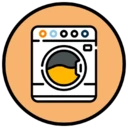
Best Temperature Regulation: Simba Hybrid Duvet
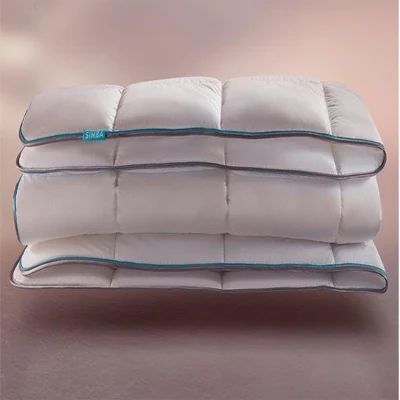
The Simba Hybrid Duvet is bound to stand out among other duvets as its product description sounds like a sci-fi movie! Basically, using their patented Stratos technology, this hybrid duvet can both warm you up and cool you down.
And this technology was initially created for astronauts, which should tip you off to the quality of the overall product!
But back here on Earth, the duvet also has a 100% cotton cover, which is very breathable and nice to the touch. And the filling is a recycled polyester material called Simba Renew.
Sure, polyester isn't usually a sought-after material. But Simba has managed to make it feel like a top-of-the-line filling! So, the fact that you're also helping the planet is just a nice little bonus.
To learn more, read our full review of the Simba Hybrid Duvet.
- Cover: Cotton
- Fillings: Polyester
- TOG: 10.5
- Size: Single, Double, King, Super King
Advantages



Disadvantages

Best Summer: Emma 4-Seasons Duvet
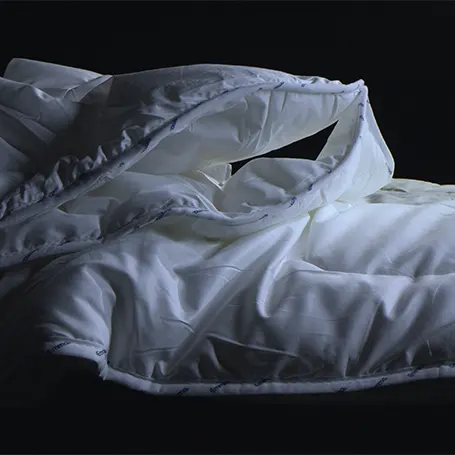
The beauty of 3-in-1 duvets is that they bring an incredible level of customizability. After all, even the best all-seasons duvet can't exactly feel as cool as a 4.5 TOG duvet.
And the Emma 4-Seasons Duvet takes full advantage of this fact! With one layer being only a 3.5 on the TOG scale and the other a 7, you're guaranteed to stay cool during those warmer months.
Plus, both inserts have a nice cotton cover for added breathability. And they can easily be clipped together to bump up the TOG rating to a 10.5 and keep you a bit warmer.
With that being said, 10.5 likely isn't going to be warm enough to keep you comfortable during harsher winters. So, we'd say it's more of a 3-seasons duvet in practice.
But if you're more concerned about staying cool, we'd say this is one of the best duvets you can get in the UK at the moment!
- Cover: Cotton
- Filling: Recycled polyester
- TOG: 3.5, 7
- Size: Double, King, Super king
Advantages



Disadvantages


Best Upgrade Pick: Scooms Hungarian Goose Down Duvet
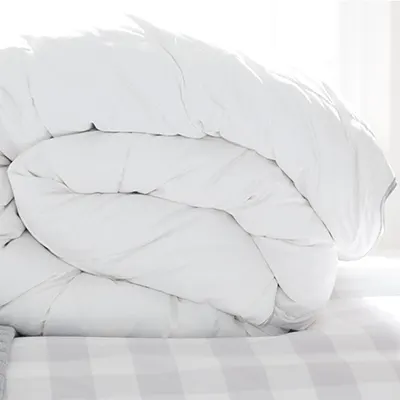
When it comes to keeping you warm, very few duvets can stand in the ring with a feather and down duvet! Not only that but they're also the lightest and fluffiest duvets in the market.
So, this duvet already has a lot going for it. However, the fact that it's Hungarian goose, ups the quality quite a bit. Plus, you can get this duvet as a 2-in-1.
This means that you'd get a nice, light summer duvet, a slightly warmer autumn duvet, and a hefty 13.5 TOG duvet all with one purchase! So, it lives up to the name “all-seasons duvet” a lot better than most.
And if that wasn't reason enough to fall in love with this summer/winter duvet, it also comes with a sateen cotton cover, which is at the very top of quality when it comes to bedding.
So, while this duvet is quite expensive, it does cover all of your basis and offers unparalleled comfort.
To learn more about it, read our full review of the Scooms Hungarian Goose Down Duvet.
- Cover: Sateen cotton
- Fillings: 90/10 Hungarian goose down and feather
- TOG: 4.5, 9
- Size: Single, Double, King, Super King
Advantages



Disadvantages

Best Design: The White Company Hungarian Goose Down Duvet
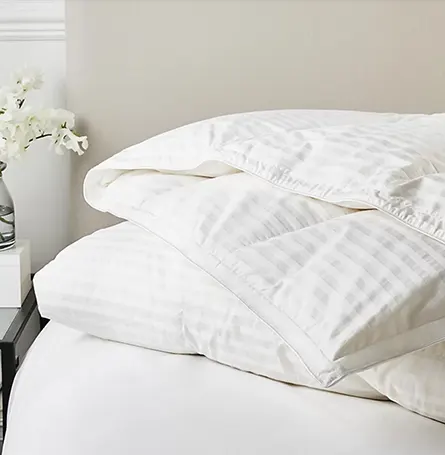
With a 90% goose down filling, this is one of the fluffiest duvets you can possible get! It's relatively light, bouncy, and a must-have for any snuggling session.
Plus, the outer casing is one of the best we've seen so far, with a 329-thread-count cotton jacquard design made for both breathability and comfort!
But the most unique features this feather and down duvet has to offer is actually near the courners. While we've seen 3-in-1 duvets before, this one is a bit different. Namely, the duvet comes with buttonholes and cufflinks that you can use however you want.
In other words, you can just combine two of these all-season duvets and enter a whole new world of warmth and comfort!
And since these duvets also come with a 10-year warranty, this tactic can keep you comfortable for a decade or more. Although we will note that their return policy is a bit strict.
- Cover: Cotton jacquard
- Filling: 90% Hungarian goose down, 10% Hungarian goose feather
- TOG: 10.5
- Size: Single, Double, King, Super king
Advantages



Disadvantages


Best Down Alternative: Feels Like Down Duvet
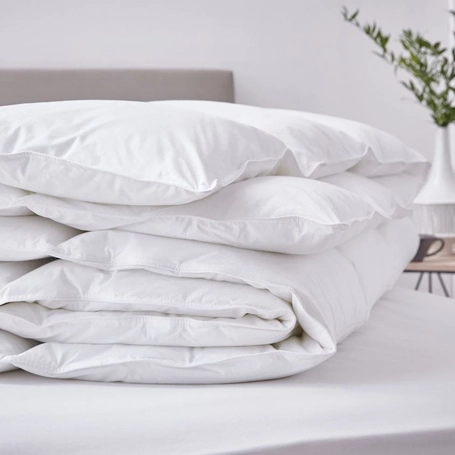
This duvet from Dusk is the Feels Like Down Duvet which has many options available. You can choose from the standard sizes, as well as 4.5 tog, 9 tog, 13.5 tog or an all-seasons. The all season option is two duvets (4.5 tog and 9 tog) buttoned together to make one, so you’re getting a 3-in-1 product with that choice.
Rather than stuffing the duvet with feathers, it uses microfibre filling with a cotton covering to give you the same experience. It’s an alternative to a feather duvet but still with a luxury feeling to it without the luxury price tag. It’s a lightweight design that you can cosy up with as you doze off to sleep.
What’s even better is it can be machine washed too, so you can keep it fresh and clean as often as you’d like – hassle-free.
- Cover: Cotton
- Filling: Microfibre
- TOG: 4.5, 9, 13.5
- Size: Single, Double, King, Super King
Advantages



Disadvantages

Best Winter: Chatsworth Deluxe Washable Wool Duvet
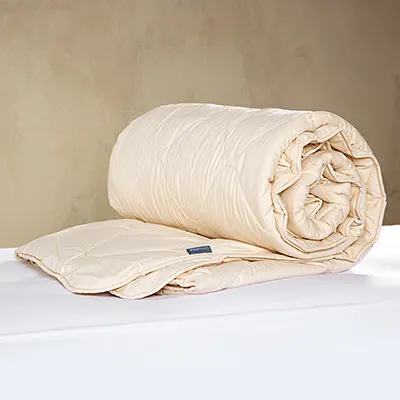
When it comes to keeping you warm, wool is arguably the best filling on the market. It naturally keeps your body at an optimal temperature and deals with excess moisture a lot more effectively than polyester or down fillings.
So, when it comes to winter duvets, it shouldn't be a surprise that a wool filling is top-tier!
The Chatsworth Deluxe sports traceable, high-quality wool at a few different TOG ratings. And their winter, or warm, version comes with a TOG of between 11 and 14. So, it's potentially a bit warmer than most other winter duvets.
It also comes with a nice 200 thread-count cotton cover that further adds to the breathability. And seeing how they even have the stamp of approval from Allergy UK, you can rest assured that everything is hypoallergenic!
To learn more, read our full review of the Chatsworth Deluxe Washable Wool Duvet.
- Cover: Cotton
- Filling: Wool
- TOG: 11-14
- Size: Single, Double, King, Super king
Advantages



Disadvantages


Best All-Season: Nectar Duvet
This all-seasons duvet is simple but effective. It uses Smartfill technology combined with their unique Modal filling to keep you comfortable year-round. Hence the 10.5 TOG rating.
This filling is also synthetic and made from wood pulp, meaning that it's completely hypoallergenic and vegan. Plus, in terms of bounciness and feel, it's pretty close to down duvets.
The cover is also synthetic, microfibre to be more precise, and it has a nice textured design that's pretty soft to the touch.
Lastly, even a King sized duvet from Nectar is pretty affordable. Plus, it comes with a 2-year warranty. So, we'd say you're getting a pretty good bang for your buck!
To learn more, read our full review of the Nectar Duvet.
- Cover: Microfibre
- Filling: Modal
- TOG: 10.5
- Size: Single, Double, King, Super King.
Advantages



Disadvantages


Best Synthetic: Dorma Full Forever 13.5 Tog Duvet
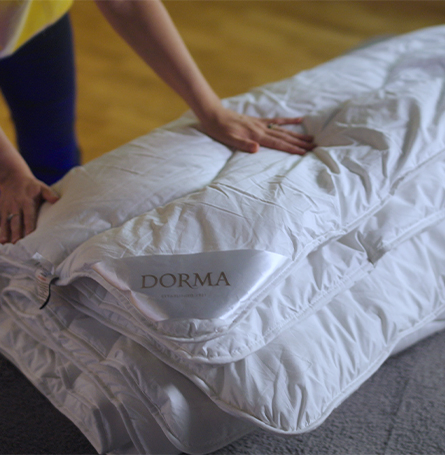
While synthetic duvets might not sound as appealing as down or wool duvets, they can still be rather extraordinary. For example, with the Dorma Full Forever Duvet, you can count on staying warm all throughout winter at a reasonable price.
While this duvet does mostly use polyester, it does also sports a high thread count and a quilt stitch design. This means that it feels very nice to the touch and you don't have to worry about the filling bunching up during the night.
It also has a 13.5 TOG rating, which will keep you nice and cosy during autumn or winter nights but is definitely too hot for summer.
And while it's a shame that the duvet doesn't come with a trial or warranty, it also isn't all that expensive. So, we'd stay it's still worth checking out.
To learn more, read our full review of the Dorma Full Forever 13.5 Tog Duvet.
- Cover: 100% cotton
- Filling: 100% recycled polyester
- TOG: 13.5
- Size: Single, Double, King, Super King
Advantages



Disadvantages


How to choose the best duvet?
When you want to choose the perfect duvet for yourself or your family, you must understand what makes a good duvet. Knowing the identifying features and how they affect the feel of a duvet will make the selection process much easier. Before you are the key features, we feel you should consider before buying the best duvet.
Size
As you might've guessed – not every duvet is the same. The most obvious difference between the duvets is their size. Naturally, a grown person and a small child don't need the same size duvet. While it is true that a small person could benefit from a larger duvet, it does not work the other way around.
Furthermore, a duvet should sit nicely on your bed, therefore, you need to match the mattress size with your new duvet, otherwise, it's either going to hang off the bed or be too small.
In general, the duvet sizes range from cot bed (120x140cm) through to emperor (290x235cm) with all the other regular sizes (single, double, queen, king, super king) in between.
The filling
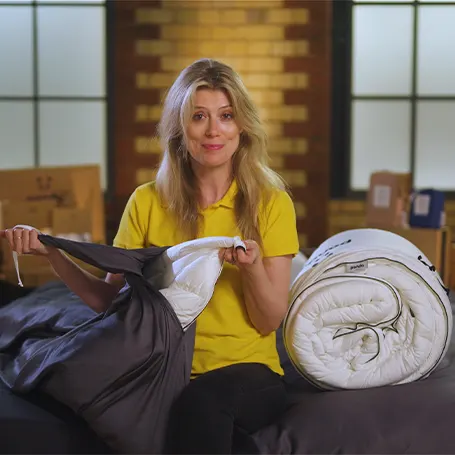
When it comes to the performance of your duvet, the filling plays the largest part. After all, it dictates how warm, heavy, breathable, and comfortable the duvet is going to be.
One of the more common duvet fillings you'll find is feather and down. Feather and down duvets have always been popular, especially for winter duvets, and we'd wager that most people have had one at some point.
Additionally, a duvet filling could be polyester/microfibre, cotton or wool. And all of these fillings come with slightly different features, with synthetic fillngs usually being the cheapest, wool fillings being the warmest and so on.
But this is quite an oversimplification. So, let's go a bit more in-depth and see which duvet filling is best suited for your needs and which ones you should avoid.
Feather and down duvets
Among the natural duvets, a feather and down filling is arguably the most popular. After all, feather and down duvets are typically very light and they can serve as both a summer duvet and a winter duvet. Plus, if the duvet has a large percentage of down, they're incredibly comfortable.
However, there are a few things to keep in mind here. First off, a feather and down duvet filling can't be washed. And if the duvet rips even a little bit, the down can escape and make quite a mess. So, maintenance is a bit difficult. Plus, some people are allergic to feathers. And a feather and down duvet can be on the pricier side.
Advantages



Disadvantages



Wool duvets
Wool duvets are also a very common natural duvet filling. And for good reason! For one, wool is one of the best materials when it comes to temperature regulation. This means that winter duvets that use a wool filling will easily keep you warm and snug throughout the night. And even during the summer, a thinner wool duvet can keep you comfortable.
On top of that, good wool duvets also wick away moisture! So, a wool duvet is an even better option for hot sleepers or people who tend to sweat a lot during the night. And since a wool duvet is a bit heavier than a feather and down duvet, it will also keep you nice and snug! For some, this is the reason the best winter duvet has to have a wool filling. But we'll talk more about that later.
However, just like with feather and down duvets, some people will be allergic to wool duvets. Plus, a wool duvet tends to have a specific smell, at least initially. And, as with all duvets with natural fillings, good wool duvets are more expensive than simple synthetic models.
Advantages



Disadvantages



Synthetic duvets
So far we've mostly focused on natural duvets. However, synthetic duvets can be just as appealing! For one, synthetic duvets offer the largest number of different models.
Whether you want a thirty-pound microfibre duvet or a luxury hybrid duvet, synthetic duvets have you covered. And, since there are so many options, you can also get synthetic duvets for very cheap.
Plus, synthetic duvets are the easiest when it comes to maintenance. While you should always check the care label first, lots of synthetic duvets can be machine-washed.
With that being said, they also have their downsides. For one, synthetic duvets tend to struggle a lot more when it comes to temperature regulation (especially the cheaper models). And their durability can be pretty low as well.
Plus, since there are so many different models, the value you're getting varies greatly. On the other hand, a feather and down or wool duvet is always going to be at least decent.
Advantages



Disadvantages



Tog rating
If you haven’t purchased a duvet before, chances are, you don’t know what a tog rating is. Essentially, a tog rating tells you how warm the duvet is. And since you don't want to be under a winter duvet during the summer, tog ratings are rather important.
The general rule of thumb is that you should choose a higher tog-rated duvet if you have trouble warming up during the night, especially in your lower extremities.
The tog rating scale starts at 1.5tog and ends at 18 tog. The 1.5 tog is the coolest rating a duvet could get and those ones are ideal for hot, summer days. On the other hand, if you live somewhere rather chilly, you’d look for something with a tog rating above 12.
In general, the duvets that can be used during the whole year will be rated a 10.5 tog. Summer duvets will be around 4.5 tog and a Winter duvet will be around 13.5 tog.
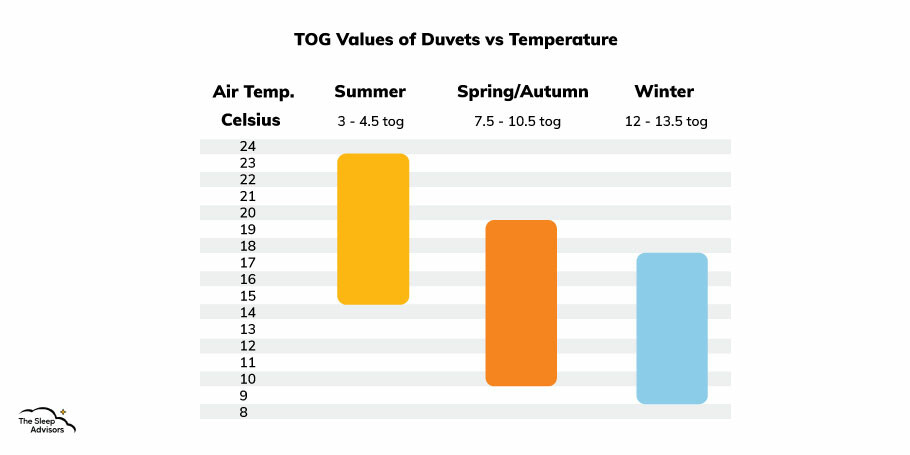
Easy maintenance
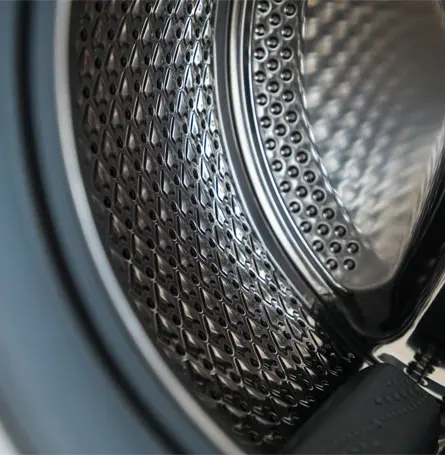
Duvets aren’t supposed to be high maintenance. In general, a duvet should be cleaned once a year, unless it was soiled in some way. However, just because you need to wash it once a year does not mean you shouldn’t think about how easy it will be.
Most duvets are machine washable, which is a good thing. However, not all of them can be handled the same way. Feather and down filled duvets need to be washed with special care. They should be washed using a slow-cycle and with warm water.
On the other hand, synthetic filled duvets are generally easier to take care of, meaning, you could wash them using a normal cycle and temperatures up to 60 degrees Celsius. Naturally, you’d want to make sure the duvet fits in your washing machine.
Finally, you should avoid dry cleaning your duvets as chemicals could damage the fillings and ruin your duvet.
A high-quality cover
The duvet cover (or the duvet casing) is also something you should pay special attention to. You should always aim for your duvet to have a quality, natural cover instead of a synthetic one. After all, the cover is the thing that's going to be in contact with your skin all night long!
So, you'd want a soft, natural material that won't irritate your skin. Plus, natural materials are usually better when it comes to breathability and therefore temperature regulation.
Therefore, always try to find natural covers if you can. Materials like cotton or bamboo are ideal for the casing because they’re high-quality and hypoallergenic. Also, make sure that the thread count is high, so you’ll end up with the best, most comfortable feel on your skin, while also being the most efficient in repelling allergens.
Hypoallergenic properties
While it's not nearly as important as the previous factors to a lot of people, allergy sufferers need to take note of whether their new duvet is hypoallergenic. And this word, “hypoallergenic” relates to a few things. For one, make sure that you're not allergic to the duvet filling.
Wool and even more so a feather duvet could cause allergies in some people. A microfibre filling on the other hand should be a safe pick for everyone.
Secondly, whether the duvet cover prevents dust mites. Both dust and dust mites can cause outbreaks so getting a duvet with a good anti-dust-mite cover is very useful. And if you don't want to get multiple separate duvets and worry about all this stuff, we suggest looking into all-season duvets that tick all the boxes instead.
Eco-friendly manufacturing
Another feature that won't dictate what makes the best duvet for some but will for others is sustainability. AKA is your single, double, king or super king duvet going to end up in a landfill and how much damage will it do? And luckily these days quite a few of the best duvets on the market are sustainable and it isn't too difficult to find an eco-friendly option.
Brands like Simba or Panda London are typically good in this regard. But you can also look for specific badges. The OEKO-Tex certification lets you know there were no dangerous chemicals involved. And if you can find a duvet filling made from recycled plastic, even better.
Tips for buying and using the best duvets
Before you buy and start using your duvet – take a look at this.
First of all, don’t rush into buying a new duvet. Take your time, do your research and try and find the best duvet for your needs, because, not every duvet will feel the same. Read the reviews, stay informed and use that knowledge to buy the best duvet.
Furthermore, if you get really hot during the night – consider a silk duvet. Silk duvet is more than just a luxury item. Silk is arguably the most breathable and temperature-regulating material you can get and any hot sleeper could benefit from it.
Finally, consider using a duvet protector to extend your duvet's life. A protector will not only serve as an anti-stain layer, but it will also protect your duvet from some other forms of physical damage such as nicks or tears.
- Read the reviews before buying
- If you’re a hot sleeper – choose silk
- Use a duvet protector to extend the duvet’s life
How often should I change my duvet?
One of the most commonly asked questions is how long will a duvet last and how often should you change it. There are a lot of factors that determine how long you should keep your duvet. High-quality duvets will last you 5 years on average, but some people would likely put that upper limit even higher.
And sure, a duvet can last for longer. You'd achieve a longer lifespan by properly taking care of your duvet. Another good way to extend your duvet's lifespan is to use a duvet protector or a cover. However, it's usually better to play it safe!
How do I wash my duvet?
As we've previously mentioned, most duvets are machine washable, although, not all in the same way. For a feather-down duvet, you'd want to use a gentle, slow cycle and warm water, while the synthetic-filled duvets could be washed with less care.
The best option if you want to make sure your duvet is properly cleaned is to use professional duvet-cleaning services.
Another key aspect is drying. You'll want to make sure your duvet is properly dried after washing so that you eliminate the possibility of mould or other damage. You can air dry and machine dry your duvet
Winter duvets vs summer duvets vs all-season duvets
As we've mentioned when talking about the TOG rating, duvets can vary quite a bit when it comes to how much heat they can retain. One of the more obvious differences in this regard is the thickness, as a winter duvet is going to be a lot thicker and more bulky than a summer duvet.
And depending on where you live, you might need a separate winter duvet and a summer duvet. This is for harsher climates or for people who get hot/cold easily. Others on the other hand can just get an all-season duvet and be done with it. So, let's quickly go over these three types and discuss what to look out for.
Finding a good winter duvet
When it comes to finding a good winter duvet, staying warm is your number one priority! So, most of the time you'll want your winter duvet to be on the thicker side. It's also not a bad idea to get a winter duvet that's a bit bigger as you can wrap yourself up like a cosy burrito. So, you might want a king-size duvet!
When it comes to the filling, most conventional duvet fillings should get the job done. Choose a feather and down winter duvet if you want it to be a bit more fluffy, a microfibre winter duvet if you want a sturdier, snug feeling and a wool duvet if you're also a hot sleeper.
And the cover is also rather inconsequential. That being said if you can get a winter duvet that has a nice, soft cover, go for it. This way it won't irritate your skin. And if it's also an anti-allergy duvet, even better!
Finding a good summer duvet
When it comes to finding a good summer duvet, or a duvet for hot sleepers in general, breathability is key! This means that unlike with a winter duvet, your best duvet has to have a decent cover. Bamboo, eucalyptus, and silk duvet covers are all excellent options in this regard.
A good summer duvet should also have a pretty low TOG rating. When it comes to the actual filling, natural duvets are typically the best. However, if paired with a good cover, a synthetic duvet can get the job done as well. And while the best winter duvet is usually a bit larger, the best summer duvet can be just about any size.
After all, a lot of people toss their summer duvet to the side halfway through the night anyway. And you can look into getting an anti-allergy duvet as you'll likely use your summer duvet during spring as well.
Finding a good all-season duvet
If you don't want to have multiple duvets, with a separate duvet for every season, an all-season duvet is ideal. But unlike a winter duvet or a summer duvet, an all-season duvet has to be both good at trapping heat and letting it pass.
So, it can be a bit tricky to find a good one. Generally, you want an all-season duvet with a good, breathable cover. Secondly, you want a duvet filling that's good at temperature regulation.
A wool duvet is likely your best bet here. However, certain synthetic duvets and down duvets can also be a solid option. However, they usually have to rely on two separate duvet inserts that make up one all-season duvet.
Your ideal all-season duvet should also be an anti-allergy duvet, as you will definitely be using it when allergy season rolls around. And when it comes to the size of the duvet, it's the dealer's choice.
How much should you spend when getting the best duvet?
Whether you want the most affordable duvet or just the best value duvet, there are a few things that are worth keeping in mind when judging the price.
First off, the duvet tog rating. If you're looking to get yourself the best winter duvet, try to find at least a 13.5 tog. That way you know that it will last you the entire winter and you won't feel bad paying a little extra.
Secondly, think of the materials being used. It's normal for silk duvets to be a bit more expensive. That's because silk is a premium material! However, a polyester and microfibre filling duvet shouldn't be anywhere near the price of silk duvets. And the same goes for a merino wool duvet or a goose feather and down duvet.
Lastly, think of how much you'll be using your new duvet. If it's a solid all-season duvet or even two duvets in one, you can afford to pay a bit more. And if it's a super king duvet that you and your partner will share, the same principle applies!
After all, it's better to get a high-quality super king duvet than two cheap duvets that use low-quality materials.
What are the advantages of owning the best duvet?
As you already know, the duvet is a lot more than just something you use to cover yourself. It is something every household should have and no bedroom is complete without it.
Unlike blankets, a duvet can be quite useful during the hot summer days, as a good duvet with a low tog rating will serve as a temperature-regulating medium if you will. It will keep you dry, cool and comfortable during the warmest summer nights and we all know how hard it is to sleep soundly on a warm night.
Additionally, a quality synthetic duvet could be the difference between sneezing or not. For people who suffer from allergies, there is nothing more important than the hypoallergenic properties of their bedding. It wouldn't matter if you had a hypoallergenic mattress or sheets if your duvet was filled with dust mites.
Finally, a quality duvet will greatly improve your quality of sleep. As we all know, we spend about a third of our life sleeping and it would be a shame if that time was spent poorly. A quality duvet could be the difference between waking up happy and rested and grumpy and tired.
- They keep you cool during the summer
- They could benefit people suffering from allergies
- They improve your quality of sleep
Conclusion
So, there you have it – our top 10 list of best UK duvet comparisons is finally here. You will definitely love one if not all of the duvets listed here. In case you’re looking to replace an old duvet, need a new one or just browsing through and learning more about the best duvets… We’re sure that you can find something to your taste. All of the duvets we’ve mentioned are available for purchase online through Amazon UK or their official sites, so get to looking!
FAQs about getting the best duvet in the UK
In the end, we’ve wanted to wrap things up by answering some of the most commonly asked questions about duvets. These questions are rather simple and require simple, straightforward answers, but can still be quite useful. Let’s check some of them out!
On average, a duvet should be cleaned once every two to three months. If needed, you can even wash them more often.
It all depends on the duvet. You could wash it in a washing machine, you could wash it with a steam cleaner or you could just wipe it clean with a damp cloth.
In general, a duvet should last you about 5 years. With proper care, you could be looking at more, but it is realistic to expect five years from your duvet.
Since duvets aren’t recyclable, most of them end up in general waste. However, they could be repurposed as bedding for some animals in animal shelters.
Our Best Duvet Guides:
Best Vacuum Storage Bags for Duvets
Are you tired of struggling to find enough storage space for your duvets, clothes or pillows? Look no further, because…
Best Zebra-Striped Sheets
The history of the zebra print Even though this print is not that trendy right now (and that will change soon),…
Best Wool Duvets
Be it winter or summer, a good duvet will do wonders for your sleep quality – so, today we're on…
Best Winter Duvet
Or, you coughing and sneezing and waking up with a runny nose and itchy eyes because of that allergies. If…
Best Duvet Covers
What to consider when buying the best duvet covers People choose a duvet cover mostly because they like it the most,…
Best Deep Fitted Sheets
What to consider when buying the best deep fitted sheets You will probably be surprised how large the supply of deep…
Best Fabric Softeners
What to consider when buying best fabric softener At first glance, all fabric softeners may seem the same to us. They…
Best Dunelm Bed Sheets
Dunelm bed sheets – are they worth it? Well, these five certainly are….
Best Duvets for Toddlers
Toddlers under 12 months shouldn’t use a duvet Before we move on to the main topic, we must first warn you…
Best Grey Bedding
3 things to remember when buying grey bedding Shopping for grey bedding isn't too hard, but it isn't easy either. You…
Best Coverless Duvet
What to consider when buying the coverless duvet Since you spend a third of your life sleeping, this means that the…
9 Best Bed Sheets
What to consider when buying the best bed sheets Although the look of the bed linen greatly affects the overall look…
Best Duvets for Hot Sleepers UK
What to consider when buying the best duvets for hot sleepers UK? It’s not enough to just find a duvet that…
Best All Seasons Duvets
A good all-season duvet is: Breathable Soft Fluffs easily Gentle to skin Not irritating to your skin Not holding heat trapped Free-of-dust-mites & moisture Easily washed Lightweight Made of natural…



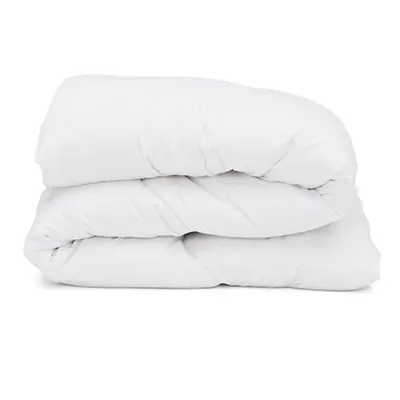
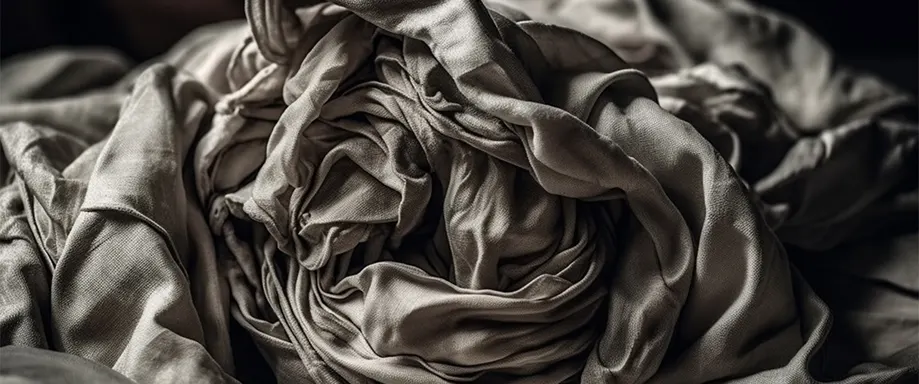
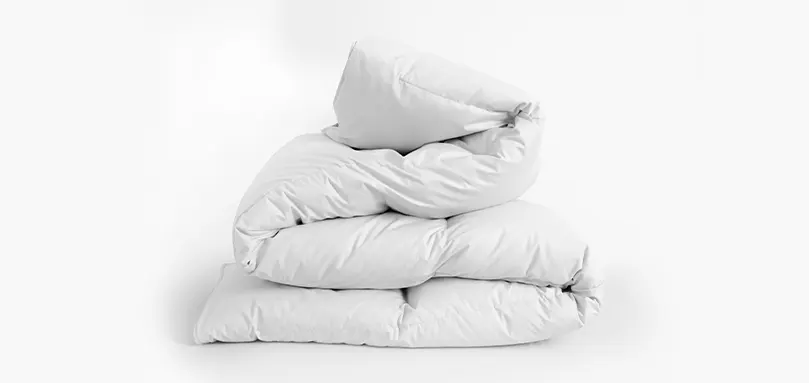

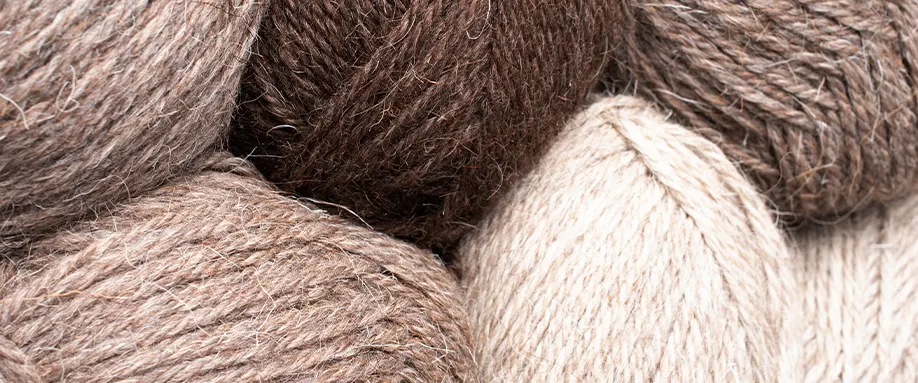

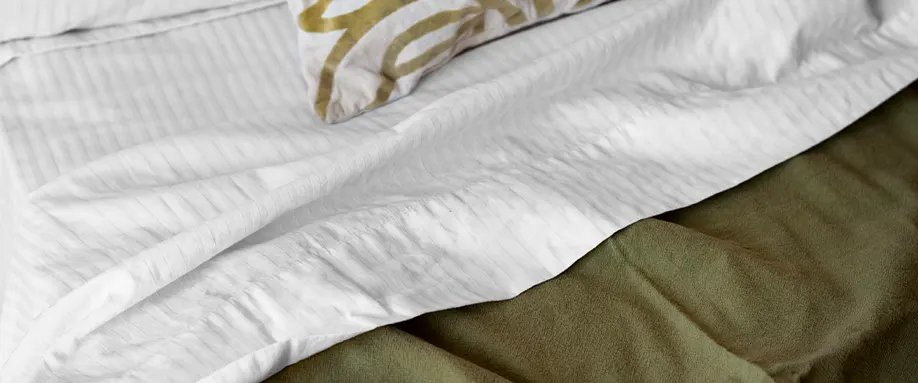
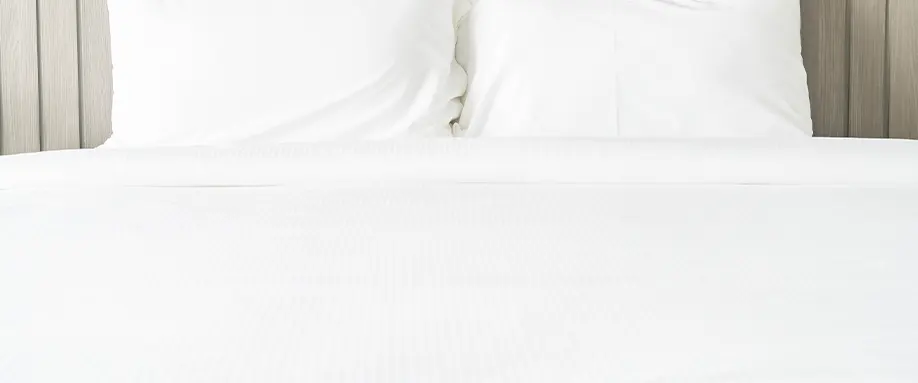

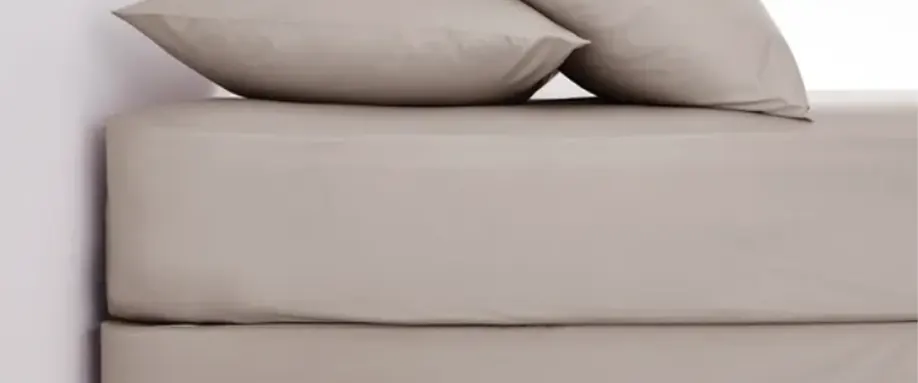

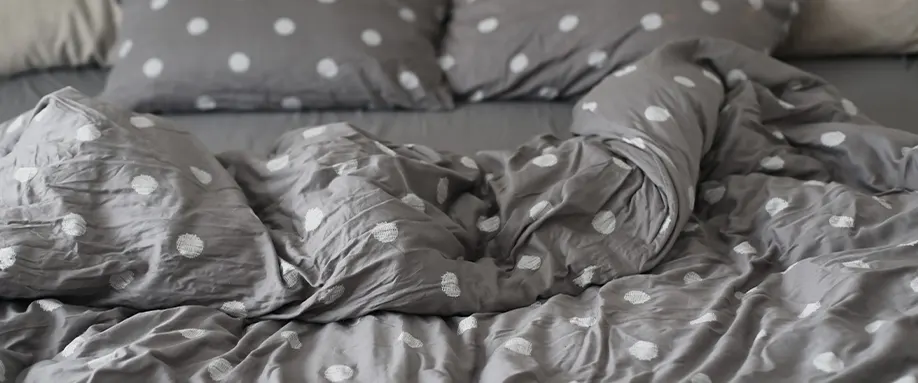



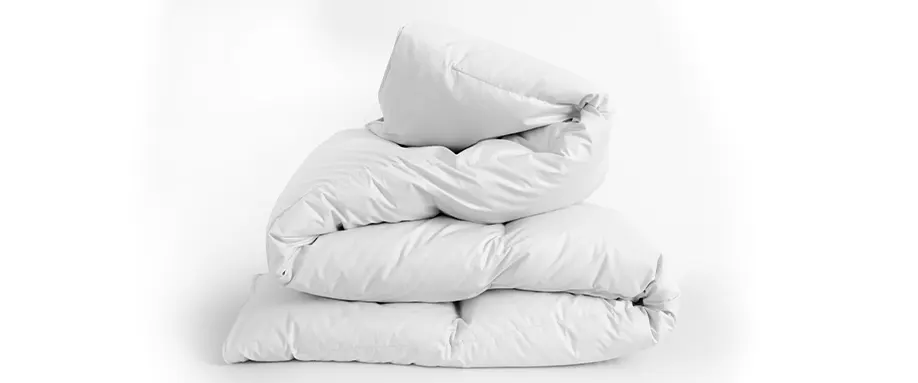

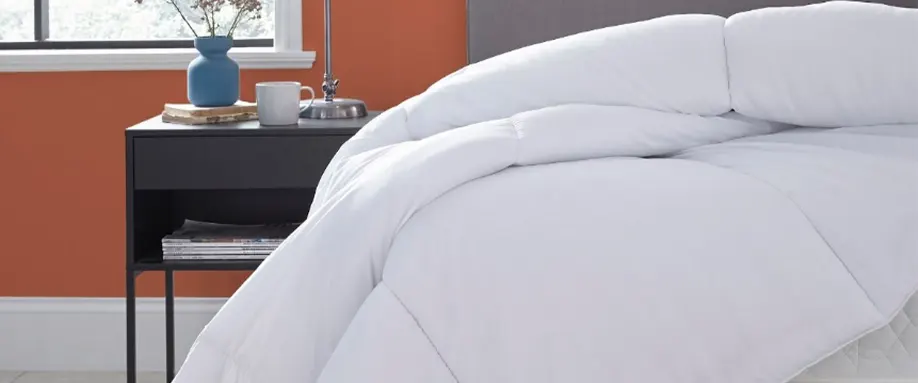


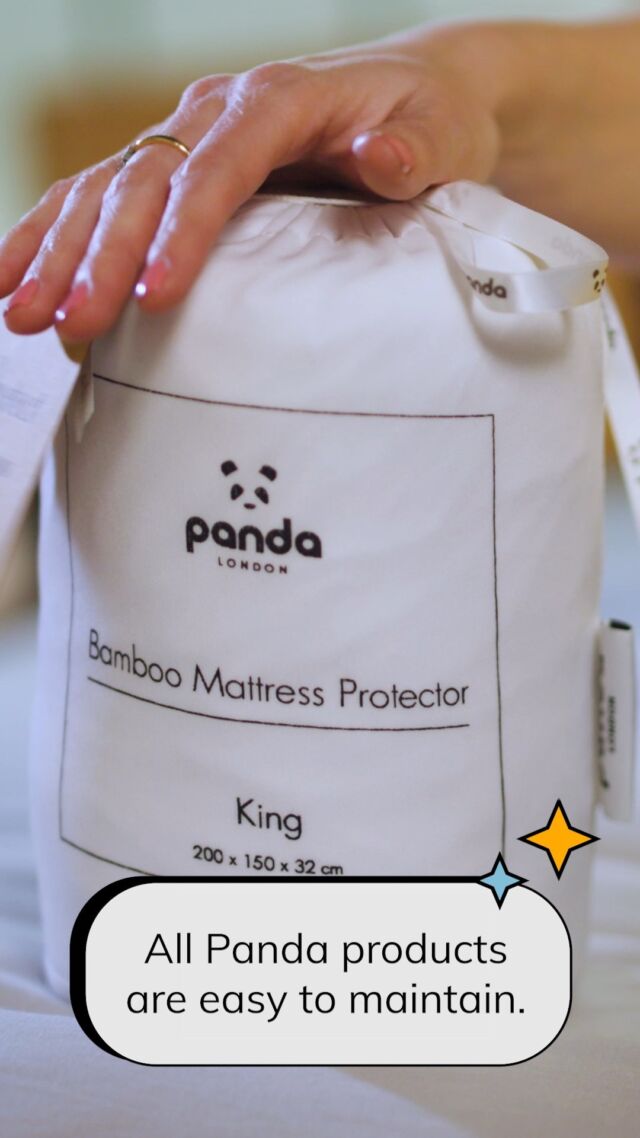










There are no comments yet
"*" indicates required fields